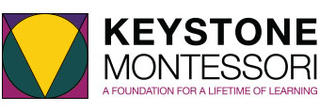Elementary (6 to 9 years & 9 to 12 years)
Maria Montessori characterized ages 6-12 as having ‘the reasoning mind’. Students explore the world with imagination and emergent abstract thought. The elementary aged child is poised to develop intellectually, emotionally and socially. Elementary classrooms at Keystone are designed to support group learning, and are equipped with a rich array of materials that stimulate intellectual curiosity and passion.
Community of Learners
 Elementary classrooms begin the year establishing the ground rules, their own student-generated constitution. Common themes each year include “this is a mistake making place” and “we will respect our classmates, teachers, and our environment,” demonstrating that even students are motivated to create a community where it is safe to take risks. It is through making mistakes, developing mastery, where true learning takes place.
Elementary classrooms begin the year establishing the ground rules, their own student-generated constitution. Common themes each year include “this is a mistake making place” and “we will respect our classmates, teachers, and our environment,” demonstrating that even students are motivated to create a community where it is safe to take risks. It is through making mistakes, developing mastery, where true learning takes place.
Our classrooms are lively, our students are engaged. Students work collaboratively with partners or in small groups; 6-9 year-olds (Lower Elementary, grades 1-3) and 9-12 (Upper Elementary, grades 4-6) have a multi-age experience with the benefits of older students acting as leaders and mentors.
Learning Environment
The classroom is organized in the same curricular areas seen in at Early Childhood 3-6. There are designated areas of the classroom for language arts, mathematics, cultural subjects (sciences, history, humanities), practical life, and space for whole group meetings or large group lessons. This flexible grouping allows teachers to meet children’s learning needs at varying levels. The room is carefully designed to promote intellectual curiosity, hands-on learning and student independence.
Montessori Curriculum
 The Montessori Elementary curriculum allows students to see and explore connections between concepts they are actively learning. By seeing the whole, children are better able to understand the interdependence of things, their role — how they fit in and what their contribution can be.
The Montessori Elementary curriculum allows students to see and explore connections between concepts they are actively learning. By seeing the whole, children are better able to understand the interdependence of things, their role — how they fit in and what their contribution can be.
At the beginning of every year, students are presented the first of the “Five Great Lessons.” Each is the jumping-off point to key academic areas that must be mastered in the elementary setting. The stories are told with drama, often acted out and supplemented with demonstrations. The essential lessons excite the children and raise more questions than answers. The stories are the catalysts that trigger curiosity and enthusiasm for exciting and important intellectual topics. The result is that children are eager to learn – even topics that might not have personally interested them in earlier studies. The Five Great Lessons vary in detail, complexity and depth for the Upper Elementary and the Lower Elementary presentations.
At each elementary program level there is a comprehensive three-year curriculum. These learning objectives meet or exceed national curriculum guides while allowing students both the structure and the flexibility to attain mastery of concepts. Students benefit from the support of highly-trained teachers with the flexibility to work at their own pace.

